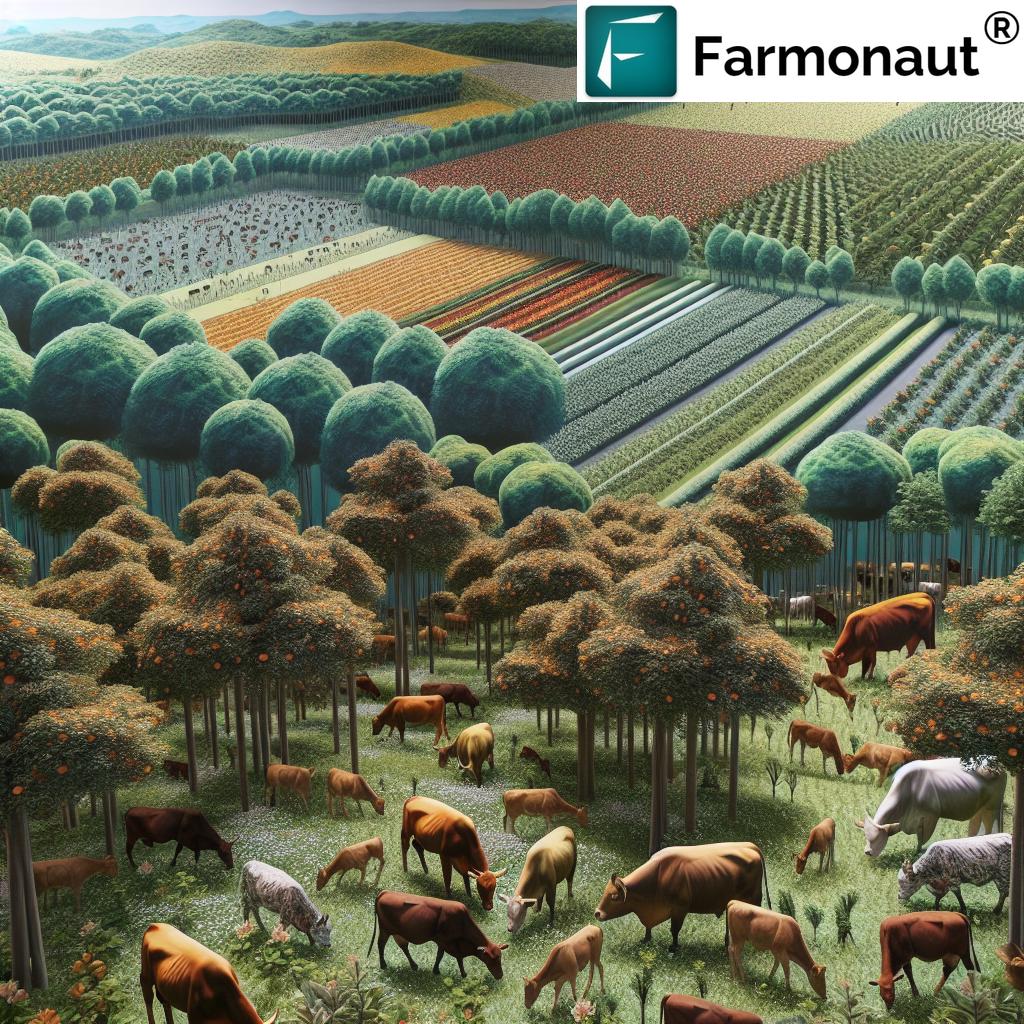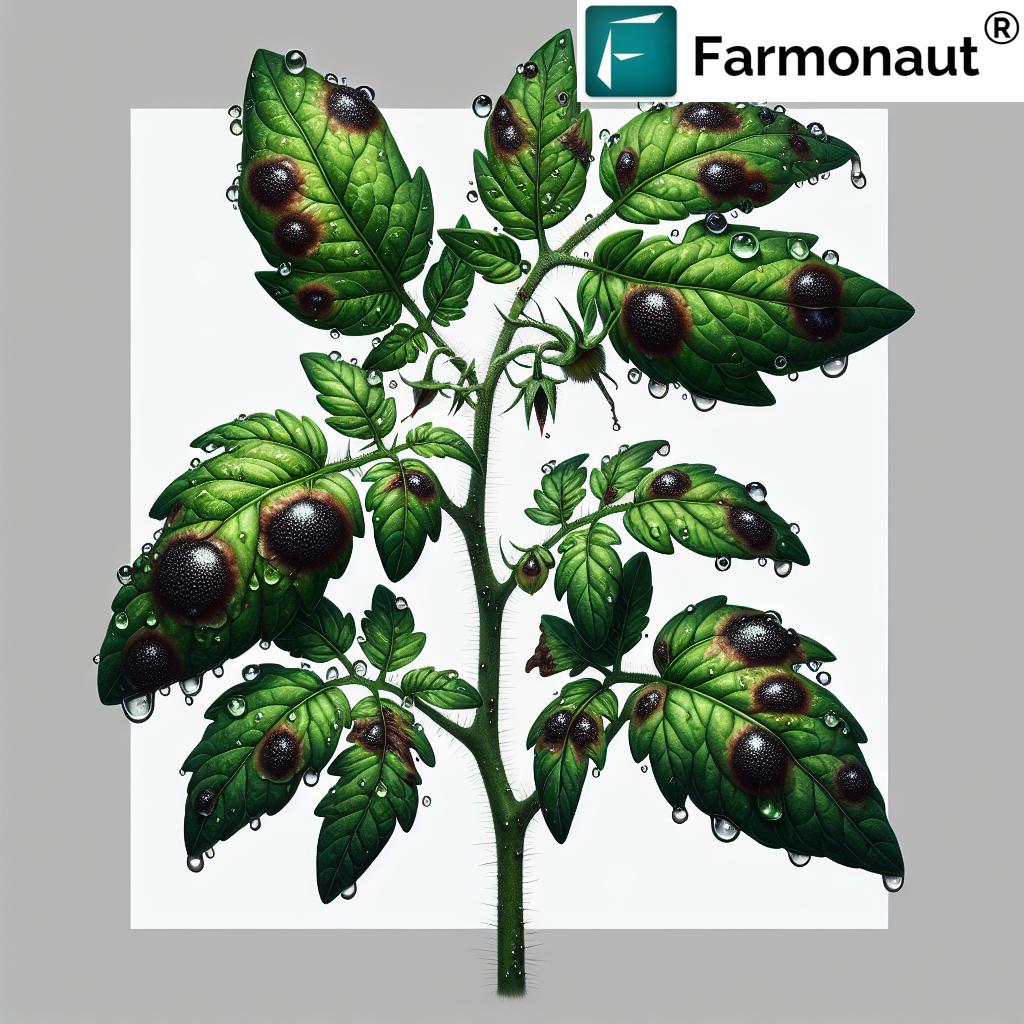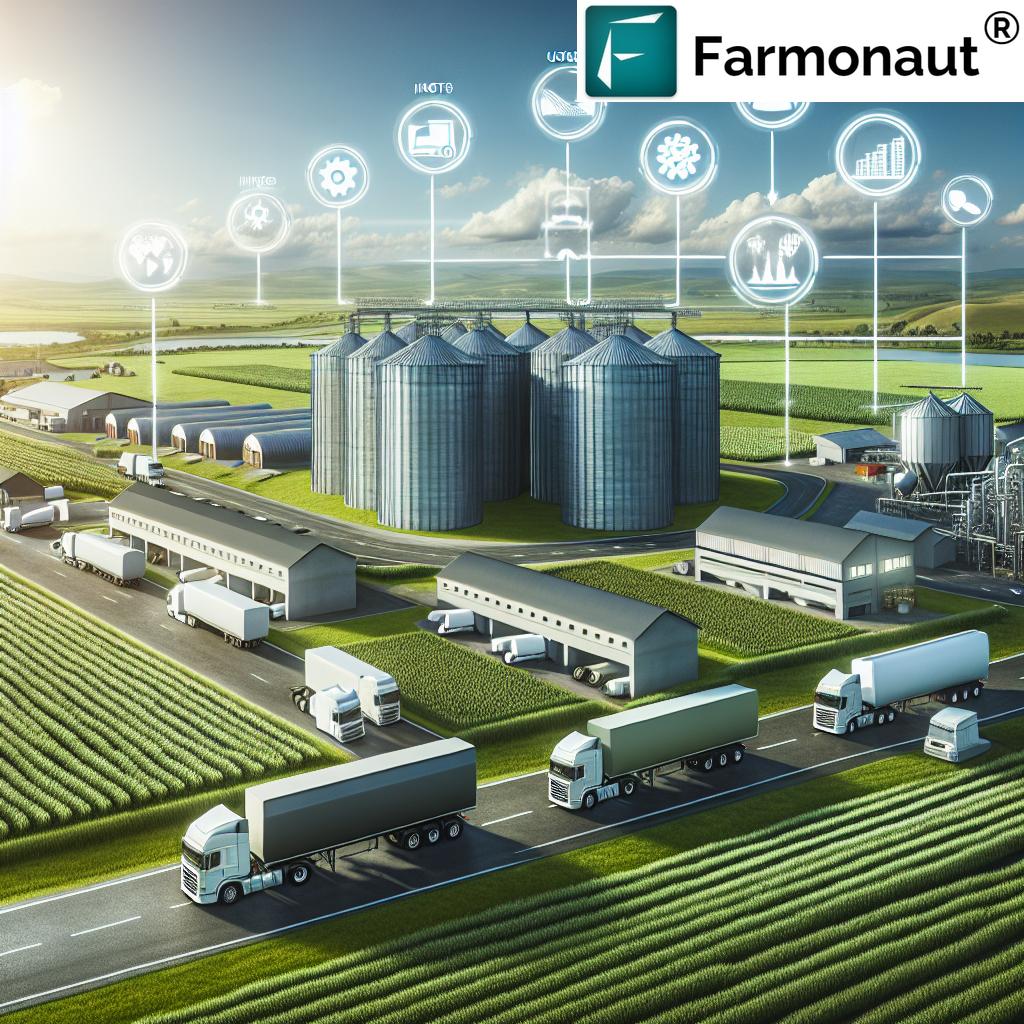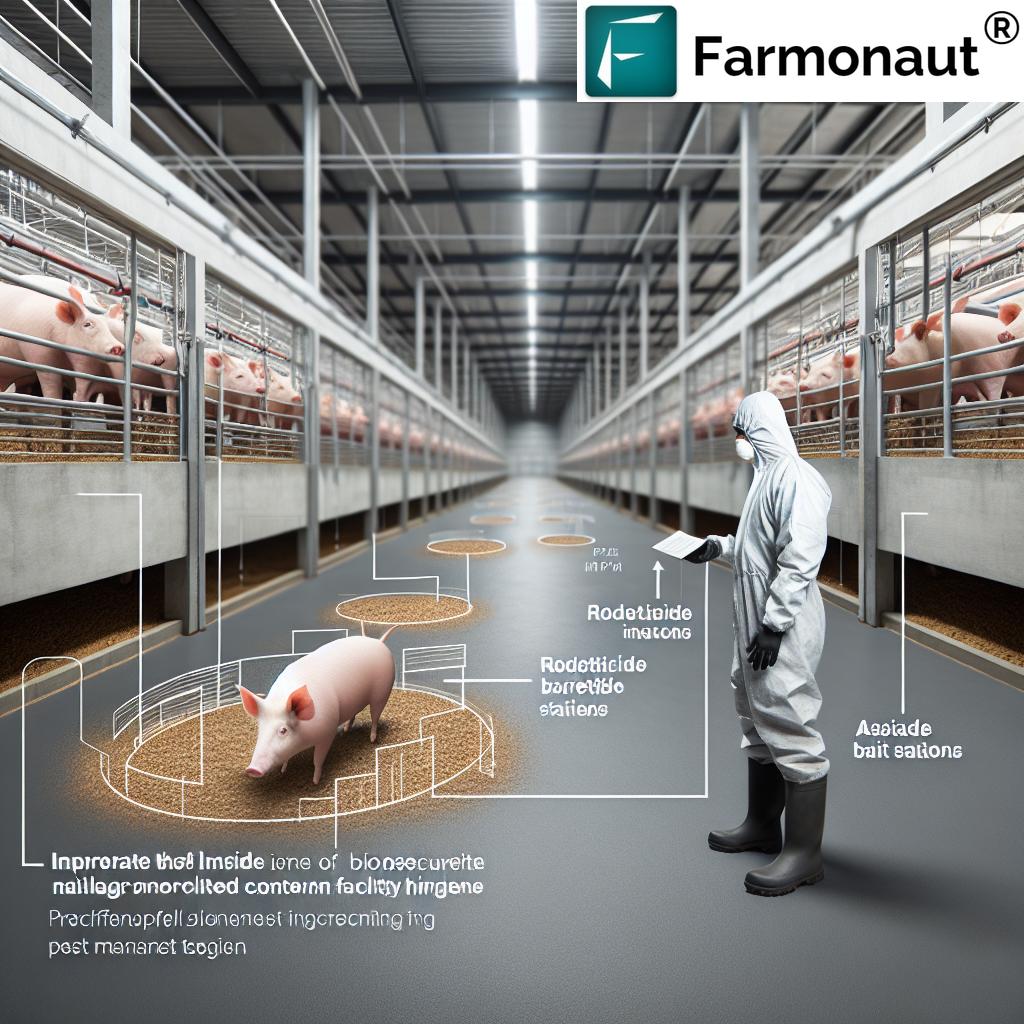- Introduction: Biosecure Farming Solutions for a Resilient Future
- Understanding Biosecurity in Agriculture & Forestry
- Why Biosecurity Matters: Food Security, Ecosystems & Economy
- Key Practices for Effective Biosecure Farming
- 7 Powerful Biosecure Farming Innovations for 2024
- Comparison Table of Biosecure Farming Innovations (2024)
- Technological Innovations in Biosecurity: The Digital Transformation
- The Future of Biosecure Farming & Forest Biosecurity Practices
- Farmonaut: Powering Data-Driven Biosecure Farming Solutions
- Biosecure Farming Solutions FAQ
- Conclusion: Advancing Sustainable, Biosecure Agriculture
“Over 70% of new biosecure farming solutions in 2024 use advanced genetic pest control technologies.”
Biosecure Farming Solutions: 7 Powerful Innovations for 2024
Introduction: Biosecure Farming Solutions for a Resilient Future
As the world faces unprecedented challenges—from climate change and the rapid movement of people to increased international trade—the introduction and spread of harmful diseases and pests in agriculture and forestry has become a pressing concern. Biosecurity in agriculture is at the forefront of global sustainability efforts, ensuring that our food systems, forests, and biodiversity are safeguarded, productive, and resilient.
In this comprehensive guide, we delve into biosecure farming solutions—exploring their importance, proven practices, and the powerful technological innovations reshaping pest and disease control measures in 2024. We will also look at the vital role organizations like Farmonaut play in empowering farmers and agribusinesses through digital transformation.
Understanding Biosecurity in Agriculture & Forestry
Biosecurity refers to the comprehensive measures and practices designed to prevent the introduction and spread of harmful biological agents—such as pests, diseases, and invasive species—that threaten plants, animals, and ecosystems. It’s the foundation of food security, agricultural stability, and ecosystem health, playing an essential role in both farming and forest biosecurity practices.
In today’s interconnected world, biosecurity in agriculture encompasses a diverse suite of strategies, from strict access control and waste management to cutting-edge technology like AI-powered monitoring and blockchain traceability. By implementing these cross-disciplinary strategies, we can not only prevent disease outbreaks in farming but also preserve the vital biodiversity of our agricultural and natural areas.
Why Biosecurity Matters: Food Security, Ecosystems & Economy
The importance of biosecurity cannot be overstated. Its direct impact spans:
- Protecting Crop, Livestock, and Plant Health: Healthier plants and animals mean more productive farms and forests, as well as ecosystem resilience.
- Ensuring Food Security and Biosecurity: Internalizing robust biosecurity practices safeguards the food supply necessary to feed the growing global population.
- Economic Stability & Loss Prevention: Disease and pest outbreaks lead to direct financial losses. Effective biosecurity helps mitigate risks, protecting the livelihoods of farmers, supporting rural communities, and buttressing national economies.
- Environmental Conservation: Preventing the introduction and spread of invasives contributes to protecting biodiversity in agricultural ecosystems and forests.
By implementing comprehensive and innovative biosecure farming solutions, we stand at the crossroads of safeguarding our agricultural heritage and ensuring a sustainable future.
Key Practices for Effective Biosecure Farming
At the core of any biosecure farming program lies a suite of diligent practices. These proven steps form the backbone of forest biosecurity practices, sustainable agriculture practices, and integrated pest management in forestry:
- Access Control: Restrict access to authorized personnel, maintain visitor logs, and require protective clothing. Simple yet crucial for preventing disease outbreaks in farming.
- Sanitation and Hygiene: Rigorous cleaning and disinfection protocols—covering equipment, vehicles, facilities—limit contamination and the introduction of pathogens.
- Quarantine and Isolation: Newly arrived or ill animals and plants are carefully segregated ahead of integration into the main flock/herd/plantation. Quarantine enables early detection and prevents spread.
- Pest and Rodent Control: Ongoing monitoring, adoption of integrated pest management, and collaboration with local actors are increasingly vital.
- Health Monitoring: Routine checks and diagnostic testing identify emerging threats for early intervention.
- Waste Management: Proper disposal—from manure to infected plant debris—minimizes contamination risk and supports long-term environmental sustainability.
- Biosecurity Training: Fostering a culture of awareness among farm and forestry staff helps ensure measures are consistently implemented and updated.
- Record-Keeping: Logging biosecurity practices, health checks, and interventions offers a robust audit trail and highlights improvement opportunities.
Each step builds resilience into our systems—from smallholder farms to vast forest regions—mitigating risk and empowering sustainable growth.
Efficient fleet and resource management is an emerging component of modern biosecurity. Farmonaut’s Fleet Management Solution enables agribusinesses to monitor and control machinery, reducing unnecessary cross-contamination and optimizing logistics for enhanced on-farm biosecurity.
7 Powerful Biosecure Farming Innovations for 2024
The future of biosecurity in agriculture and forestry is unfolding rapidly. Let us explore the seven powerful innovations that are propelling today’s biosecure farming solutions into tomorrow’s standards:
-
AI-Powered Pest and Disease Detection
Artificial Intelligence (AI) is transforming disease detection and integrated pest management in forestry and farming. Satellite imagery combined with machine learning can identify crop stress, monitor for early signs of infestation, and prescribe targeted interventions. Farmonaut integrates AI via tools like Jeevn AI Advisory, bringing real-time, customized biosecurity measures to farms of every size.
-
Smart Sensors and IoT-Based Monitoring
Networks of in-field sensors track soil moisture, ambient humidity, crop vigor, and movement, facilitating early warning systems for harmful agents. Data is aggregated for holistic monitoring and precise detection of risks—enabling rapid response to threats.
-
Biological Pest Control Agents and Biodegradable Barriers
Biological control agents—such as predatory insects or naturally occurring microbial pesticides—offer effective, low-impact pest suppression. Biodegradable barriers made from plant-based materials physically prevent the movement of insect vectors or weeds, further reducing the reliance on chemical inputs and enabling sustainable agriculture practices.
-
Blockchain-Based Product Traceability
From crop to consumer, traceability is crucial for rapid isolation in the event of a biosecurity breach. Farmonaut’s blockchain traceability (explore more here) ensures transparency, enhances trust, and streamlines food security and biosecurity across the agri-food chain.
-
Automated Drone Surveillance and Remote Sensing
Drones equipped with high-resolution optical, thermal, and near-infrared sensors detect field-level changes, identify pests, and locate disease hotspots quickly. This level of automation is now integrated for plantation, forestry, and field agriculture monitoring—enabling true forest biosecurity practices.
-
Big Data Analytics & Predictive Modeling
Massive, real-time datasets processed with advanced analytics (Farmonaut Satellite & Weather Data API) help identify patterns, predict outbreaks, and devise risk mitigation strategies. Informed decisions enable early, targeted interventions when and where they matter most.
-
Carbon Footprinting for Sustainable Agriculture
Tracking and optimizing carbon footprints helps reduce environmental impact—key to sustainable, biosecure farming. By combining resource management with emissions tracking (see Farmonaut’s Carbon Footprinting Solution), we empower businesses, cooperatives, and individual farmers to move towards net-zero agricultural systems.
“Innovative biosecurity practices have reduced agricultural disease outbreaks by 40% in the past five years.”
Comparison Table of Biosecure Farming Innovations (2024)
| Innovation Name | Primary Biosecurity Benefit | Estimated Implementation Cost (USD) | Technology Readiness Level (1–10) | Estimated Pest Reduction Impact (%) | Sustainability Score | Projected Adoption Rate for 2024 (%) |
|---|---|---|---|---|---|---|
| AI-Powered Pest and Disease Detection | Enables precise, early detection and targeted response | $2,000–$10,000/farm | 8 | 60–85% | High | 48% |
| Smart Sensors & IoT-Based Monitoring | Continuous environment & health monitoring | $1,500–$8,000/farm | 7 | 40–70% | High | 38% |
| Biological Pest Control Agents & Barriers | Reduces reliance on chemicals, controls pests naturally | $800–$3,500/farm | 9 | 30–65% | High | 60% |
| Blockchain-Based Product Traceability | Ensures transparency, rapid recall & supply chain integrity | $1,200–$5,000/farm/business | 8 | 35–50% | Medium | 42% |
| Automated Drone Surveillance & Remote Sensing | Detects threats early, covers large areas with precision | $5,000–$20,000/operation | 7 | 55–78% | Medium | 28% |
| Big Data Analytics & Predictive Modeling | Forecasts outbreaks, improves risk management | $2,000–$12,000/farm/season | 9 | 50–80% | High | 52% |
| Carbon Footprinting for Sustainability | Minimizes emissions, promotes sustainable choices | $400–$2,500/farm | 8 | 30–50% | High | 36% |
Technological Innovations in Biosecurity: The Digital Transformation
It’s clear that technological innovations in biosecurity are the linchpin of next-generation defense against pests, diseases, and ecosystem threats. These tools are redefining biosecure farming and forest biosecurity practices in real time:
- Satellite-Based Crop Health Monitoring: Seeing fields from space isn’t sci-fi—it’s reality. Farmonaut delivers multispectral remote sensing to assess plant health (NDVI/NDWI/ARVI), soil moisture, and detect harmful agents before damage escalates.
-
Jeevn AI Personalized Advisory: One-size-fits-all doesn’t work in modern agriculture. Advanced AI crunches multisource datasets (weather, satellite, soil) to deliver custom pest management, irrigation, and nutrition advice for every unique plot, ensuring maximum crop resilience.
Explore Jeevn AI via Farmonaut’s App - Automated Tree & Plantation Mapping: For forestry, automated tree counting and risk analysis is transformative. AI detection from drone and satellite images enables precise inventory, early intervention, and supports protecting biodiversity in agricultural ecosystems.
- Resource Optimization & Sustainability: Farmonaut’s smart dashboards integrate emissions, water, and resource use data so that large-scale operations can align with sustainable agriculture practices and track their environmental savings in real time.
-
API and Platform Flexibility: Build your own tools or connect your ERP to Farmonaut’s Satellite & Weather Data API—API here—for highly customizable farm and supply chain monitoring.
For large-scale farm managers: intelligent admin platform
These advances—when paired with diligent biosecurity practices—constitute a comprehensive, future-ready approach to safeguarding both agricultural and natural environments.
The Future of Biosecure Farming & Forest Biosecurity Practices
Looking ahead, the defense of our food systems and ecosystems will increasingly hinge on four emerging trends:
- Integration of Artificial Intelligence (AI): As AI algorithms become more sophisticated, rapid analysis and predictive modeling will allow us to prevent and manage outbreaks with increased precision—even before visual symptoms arise.
- Blockchain for Traceability: As consumer demand for transparency grows, and regulators prioritize safety, seamless tracking of food, seeds, and inputs ensures rapid containment when biosecurity threats emerge.
- Sustainable Agriculture Practices: From precision irrigation to organic farming and agroforestry, sustainability in agriculture will remain a direct line of defense for biodiversity, resource conservation, and long-term economic stability.
- Global Collaboration & Resource Sharing: Increasingly, knowledge, data, and policy cross borders to address issues no single nation can confront alone. Our tools and best practices, especially those enabled by platforms like Farmonaut, can be shared to support planetary food security and sustainability.
By embracing these directions, the agricultural and forestry sectors can not only mitigate risks but actively build a more sustainable, resilient future.
Exploring affordable financing for rapid farm upgrades? Satellite-based verification is now used for crop loan and insurance (see Farmonaut’s Crop Loan & Insurance Verification). This helps both farmers obtain fair access and lenders reduce risk, speeding recovery in the event of pest and disease outbreaks.
For businesses wanting to elevate sustainability credentials and comply with international reporting, carbon footprinting tools (see detailed info here) offer a seamless way to document and minimize environmental impact—a critical pillar of biosecurity and food system integrity in the coming years.
Farmonaut: Powering Data-Driven Biosecure Farming Solutions
At the cutting edge of biosecurity in agriculture, Farmonaut delivers a suite of digital solutions to empower farmers, agribusinesses, and global stakeholders alike. Our subscription-based model brings affordability and flexibility, ensuring everyone—from smallholder farms to national institutions—can access technology-driven biosecure farming solutions.
- Real-Time Crop Health Monitoring: Leverages satellite imagery for fast, scalable assessment of fields, plantations, and forest tracts for pest and disease detection.
- AI-Driven Farm Advisory (Jeevn AI): Empowers personalized, data-backed recommendations for irrigation, nutrient management, and pest/disease alerts.
- Blockchain Traceability Tools: Increase food chain transparency, ease regulatory compliance, and strengthen consumer trust.
- Fleet, Resource & Carbon Management: Helps businesses optimize resource use, minimize emissions, and promote sustainable practices at scale.
- Flexible Integration: Use our web, iOS, Android Apps, or API endpoints to integrate our insights with farm management systems, co-op dashboards, or government monitoring programs.
Choose Farmonaut for:
- Cost-effective precision biosecurity monitoring, without expensive hardware
- Detailed, real-time datasets for better, faster decision-making
- Tools designed for all scales: from small farm plots to multinational holdings
- Full support for sustainability and regulatory compliance
Empower yourself with technology that’s actually accessible.
Biosecure Farming Solutions FAQ
What is biosecurity in agriculture?
Biosecurity in agriculture refers to the set of strategies and measures used to prevent the introduction and spread of diseases, pests, and other harmful biological agents within farming systems. These practices protect crops, livestock, and the broader environment from damage.
How do technological innovations support biosecure farming?
Technological innovations in biosecurity—such as AI-powered detection, remote sensing, smart sensors, and blockchain traceability—enable earlier warning, faster intervention, greater transparency, and more sustainable pest and disease control measures.
Why is traceability critical for food security and biosecurity?
Traceability ensures each product can be tracked through every stage of the food chain. This is essential for speedy response in the event of a biosecurity breach, supporting rapid recalls and containing outbreaks to protect food security and public health.
Are biosecure farming solutions only for large agribusinesses?
Absolutely not. With digital platforms like Farmonaut, affordable, scalable precision agriculture is within reach for smallholder farmers, cooperatives, and even NGOs or government agencies managing public lands and forests.
How do sustainable agriculture practices enhance biosecurity?
Sustainable agriculture practices—including reduced chemical use, integrated pest management, crop rotation, and conservation tillage—minimize the risk of disease/pest escalation and help protect vital biodiversity within agricultural ecosystems.
Where can I learn more or implement these solutions?
Start by exploring digital platforms (such as Farmonaut’s mobile and web apps), consulting with agricultural extension teams, or visiting online resources focused on biosecurity in agriculture. Businesses can leverage precision tools, APIs, and advisory systems for rapid, data-backed upgrades.
Conclusion: Advancing Sustainable, Biosecure Agriculture
In this era of global change, biosecure farming solutions are indispensable for protecting our food systems, preserving biodiversity, and ensuring both economic stability and environmental conservation. By embracing advanced technological innovations in biosecurity and proven biosecurity practices—and making these tools accessible through platforms like Farmonaut—we enable a comprehensive, resilient response to present and future threats.
Let’s use data-driven insights, community awareness, and sustainable agriculture practices to create a safer, greener, and more productive planet for generations to come.


















